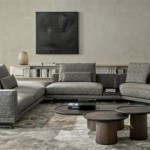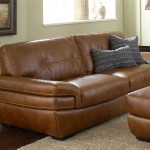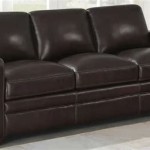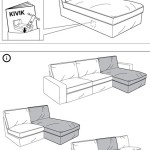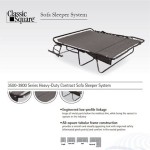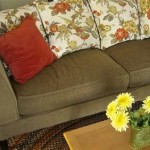Wicker Sofa Replacement Cushions: A Comprehensive Guide
Wicker sofas offer a blend of style and comfort, often gracing patios, sunrooms, and living areas. However, the cushions that accompany these sofas are subject to wear and tear, fading from sun exposure, and general use. Replacing these cushions is a common necessity for maintaining the aesthetics and comfort of wicker furniture. This article provides a detailed overview of selecting, purchasing, and caring for wicker sofa replacement cushions.
Understanding the Need for Replacement Cushions
Several factors contribute to the eventual need for replacement cushions. The most prominent is environmental exposure. Outdoor wicker furniture, in particular, faces harsh sunlight, rain, and humidity. Prolonged exposure to ultraviolet (UV) rays causes fading and degradation of fabric fibers. Moisture can lead to mildew growth, compromising the cleanliness and integrity of the cushions. Even indoor wicker furniture is subject to wear from regular use, spills, and general soiling.
Another factor is the gradual compression of the cushion filling. Over time, the foam or fiber filling loses its resilience, resulting in flattened and less comfortable cushions. This compression not only diminishes comfort but also affects the overall appearance of the sofa. Furthermore, damage from pets, accidental tears, or stains can necessitate replacement. Addressing these issues through timely replacement ensures the longevity and aesthetic appeal of the wicker sofa.
The impact of worn cushions extends beyond mere appearance. Sagging or flattened cushions can affect posture and lead to discomfort. Replacing them improves the overall seating experience and enhances the functionality of the furniture. Well-maintained cushions contribute to a more inviting and comfortable living space.
Key Considerations When Choosing Replacement Cushions
Selecting the right replacement cushions involves considering several important factors. These factors include size and fit, fabric selection, filling material, style and design, and budget. A thorough evaluation of these aspects ensures that the replacement cushions meet specific needs and preferences.
Size and Fit: Accurate measurements are crucial for ensuring a proper fit. Measure the existing cushions' length, width, and thickness to obtain precise dimensions. Alternatively, measure the inner dimensions of the sofa frame where the cushions will sit. Attention to detail during the measurement process prevents the frustration of ordering cushions that are too large or too small. Consider the overall proportions of the sofa and choose cushion sizes that maintain a balanced appearance. Some manufacturers offer custom sizing options, which may be necessary for irregularly shaped wicker sofas.
Fabric Selection: The choice of fabric significantly impacts the durability, appearance, and maintenance requirements of the replacement cushions. Outdoor fabrics, such as solution-dyed acrylic and olefin, are specifically designed to withstand the rigors of outdoor use. These fabrics are highly resistant to fading, water damage, and mildew. Solution-dyed acrylic is known for its exceptional colorfastness and soft texture. Olefin is a synthetic fiber that is both durable and stain-resistant. For indoor use, cotton, linen, or polyester blends provide a comfortable and aesthetically pleasing option. Cotton and linen offer a natural look and feel, while polyester blends are more resistant to wrinkles and stains. Consider the overall style of the wicker sofa and choose fabrics that complement its design. Patterns, textures, and colors should harmonize with the existing décor of the space.
Filling Material: The filling material determines the comfort level and longevity of the cushions. Foam is a popular choice for its support and resilience. High-density foam provides firm support and is suitable for individuals who prefer a more structured seating experience. Lower-density foam offers a softer feel but may compress more quickly over time. Fiberfill, made from polyester fibers, is a cost-effective option that provides a plush and comfortable feel. Fiberfill cushions require regular fluffing to maintain their shape. Down and feather fillings are luxurious options that offer exceptional comfort. However, these fillings require more maintenance and are typically more expensive. A combination of foam and fiberfill can provide a balance of support and comfort. A foam core wrapped in fiberfill offers both structure and a soft surface.
Style and Design: Replacement cushions provide an opportunity to update the look of the wicker sofa. Consider the overall style of the sofa and choose cushions that complement its design. Solid colors provide a classic and versatile look that can easily be coordinated with other furniture and accessories. Patterns, such as stripes, florals, or geometric designs, can add visual interest and personality to the space. Consider the color scheme of the surrounding area and choose cushions that either blend in or provide a pop of color. Pay attention to details such as welting, tufting, and button accents, which can enhance the overall appearance of the cushions. The shape of the cushions can also influence the overall aesthetic. Square cushions offer a clean and modern look, while rounded cushions provide a softer and more traditional feel.
Budget: The cost of replacement cushions varies depending on the size, fabric, filling material, and manufacturer. Set a budget before starting the selection process to avoid overspending. Compare prices from different retailers and consider purchasing cushions online, where prices are often lower. Keep in mind that higher-quality cushions, made from durable fabrics and resilient filling materials, may cost more upfront but will provide better long-term value. Consider the cost of custom-made cushions versus off-the-shelf options. Custom cushions allow for precise sizing and fabric choices, but they typically come at a higher price. Balance the desire for high-quality cushions with budgetary constraints to make an informed decision.
Maintaining and Caring for Wicker Sofa Cushions
Proper maintenance and care extend the lifespan of replacement cushions and preserve their appearance. Regular cleaning, protection from the elements, and proper storage are essential for maintaining their quality.
Regular Cleaning: Consistent cleaning prevents the build-up of dirt, dust, and stains. Vacuum cushions regularly to remove loose debris. Spot clean spills immediately with a mild detergent and water. Blot the stain gently with a clean cloth, avoiding harsh scrubbing. For deeper cleaning, consider using a fabric cleaner specifically designed for the cushion material. Follow the manufacturer's instructions carefully. Removable cushion covers can be machine washed or dry cleaned, depending on the fabric type. Check the care label for specific washing instructions. Avoid using harsh chemicals or bleach, which can damage the fabric and cause fading.
Protection from the Elements: Protecting cushions from excessive sun exposure and moisture is crucial for prolonging their lifespan. When not in use, store cushions in a dry, covered area, such as a garage, shed, or patio storage box. Consider using outdoor furniture covers to protect cushions from rain, sun, and wind. These covers are typically made from water-resistant materials and provide an effective barrier against the elements. Rotate cushions regularly to ensure even wear and prevent localized fading. Place cushions in shaded areas to minimize sun exposure. Consider using UV protectant sprays to help prevent fading and deterioration of the fabric.
Proper Storage: Proper storage during the off-season is essential for preventing damage and maintaining the quality of the cushions. Before storing cushions, clean them thoroughly and ensure they are completely dry. Store cushions in a dry, well-ventilated area to prevent mildew growth. Avoid storing cushions in damp or humid environments. Use storage bags or containers to protect cushions from dust, pests, and moisture. Add desiccant packets to the storage bags to absorb any excess moisture. Stack cushions carefully to prevent them from becoming compressed or misshapen. Avoid placing heavy objects on top of the cushions. Periodically check the stored cushions for any signs of damage or mildew. Address any issues promptly to prevent them from worsening.
By understanding the factors that contribute to cushion wear and tear, carefully selecting replacement cushions, and implementing a consistent maintenance routine, individuals can ensure the longevity, comfort, and aesthetic appeal of their wicker sofas. These practices not only protect the investment in wicker furniture but also contribute to a more enjoyable and inviting living space.

Full Size Wicker Furniture Replacement Cushions

Wicker Furniture Replacement Chair Love Seat Cushions Midsize

Replacement Cushions Options Kozy Kingdom

Water Resistant Rattan Patio Furniture Sofa Replacement Cushion Seat Or Back Pad

Deep Seating Wicker Cushions And Rattan Furniture

Wicker 3 Piece Replacement Cushion Set

Charleston Replacement Cushions Loveseat All About Wicker

Elevate Comfort And Style Replacement Cushions For Wicker Deep Seating Chair

General Rattan Sofa Replacement Cushions

Wicker Replacement Cushions

